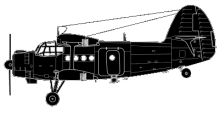Incident Overview

Description
A Tupolev 154B-2 passenger jet, registered RA-85588, was damaged beyond repair in an accident at Surgut Airport (SGC), Russia. There were 126 passengers and eight crew members on board. The airplane operated on a flight KGL348 from Surgut Airport (SGC) to Moskva-Domodedovo Airport (DME). Three passengers died and about 32 were seriously injured. The airplane was destroyed by fire. Initial reports indicate that the airplane had been towed to the main taxiway for engine startup. A short circuit occurred while the AC generators were connected to the aircraft’s electrical system after start-up of the engines. A fire erupted in the rear, spreading quickly through the main cabin. The crew shut down the engines and initiated an evacuation. The Interstate Aviation Committee reported that engines no. 1, 2 and 3 and the APU were not the source of the fire. The fire started in the rear of the aircraft in the area of frames 62-65. The cause of the fire was an electrical arc produced by electrical currents exceeding ten to twenty times the nominal loads when two generators not synchronised with each other were brought online but got connected together instead of being connected to parallel busses. The unsynchronised operation of the generators can be attributed to: – Poor technical conditions of contacts TKS233DOD responsible for connecting the generators with the electrical busses, that were damaged by prolonged operation without maintenance. A contact normally open was welded and fractured insulation material moved between contacts that are normally closed. These abnormal contact positions led to the connection between #2 and #3 generators. – Differences in the schematic diagrams of generator 2 and generators 1 and 3. When the switch is moved from “check” to “enable” with no delay in the “neutral” position generator 2 is brought online without time delay which leads to increased wear of normally closed contacts in the TKS233DOD unit. – The specific design of the electrical systems to ensure power supply to each bus from either the APU or either engine integrated drive generator.
Source of Information
http://en.rian.ru/russia/20110101/162017397.html, http://www.mak.ru/russian/investigations/2011/tu-154b_ra-85588.html, http://www.mintrans.ru/news/detail.php?ELEMENT_ID=15429http://en.rian.ru/russia/20110101/162017397.html, http://www.mak.ru/russian/investigations/2011/tu-154b_ra-85588.html, http://www.mintrans.ru/news/detail.php?ELEMENT_ID=15429Primary Cause
Poor technical conditions of the TKS233DOD contacts, specifically the damaged insulation material and welding of contacts, resulted in a connection between generator #2 and #3, leading to an electrical arc.Poor technical conditions of the TKS233DOD contacts, specifically the damaged insulation material and welding of contacts, resulted in a connection between generator #2 and #3, leading to an electrical arc.Share on:



